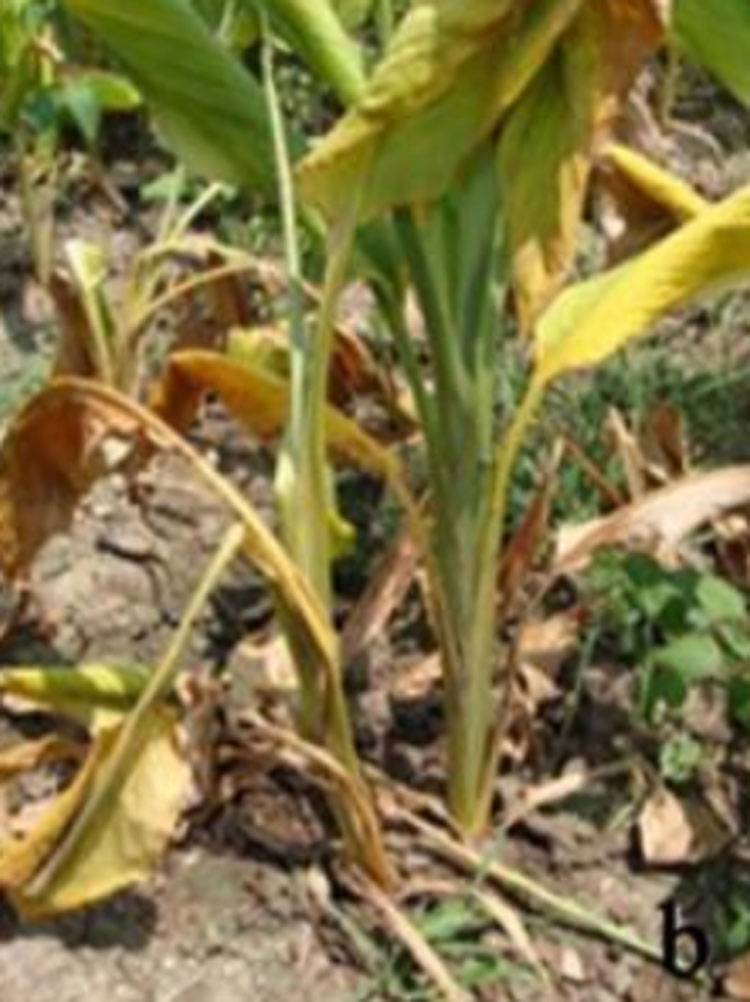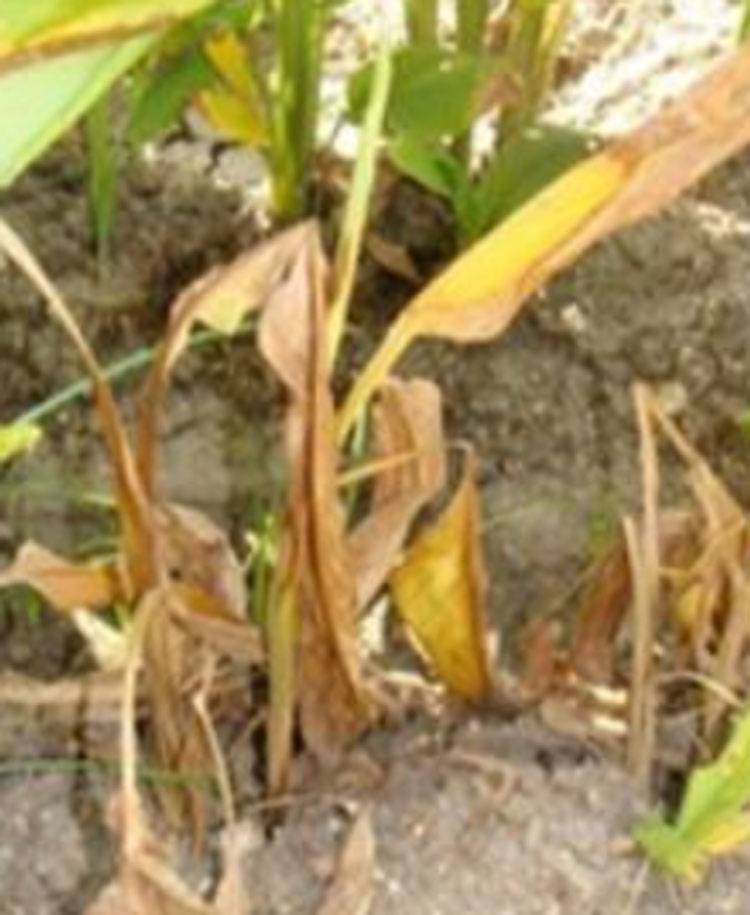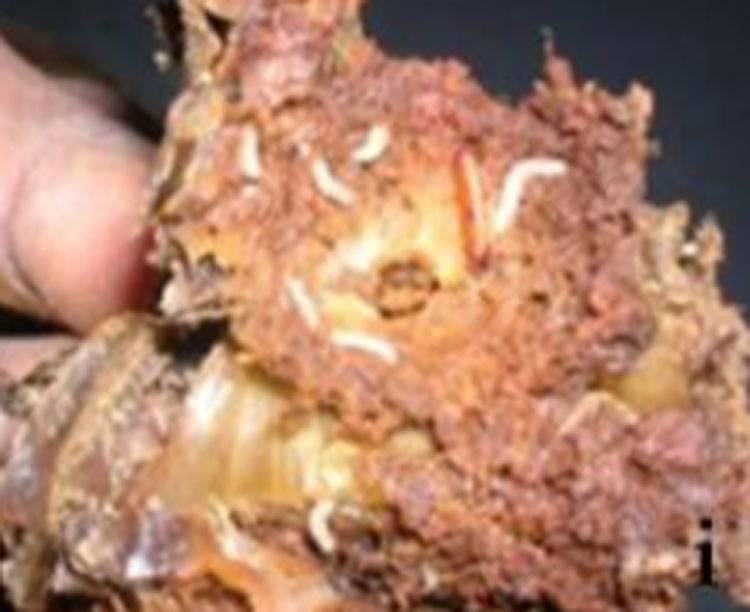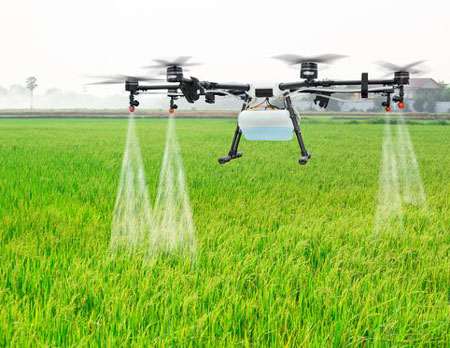Turmeric
Rhizome Rot

Pythium spp.
Fungal Disease

Pythium spp.
Fungal Disease

Pythium spp.
Fungal Disease

Pythium spp.
Fungal Disease

Pythium spp.
Fungal Disease
Symptoms
- Disease appears on isolated plants or in patches.
- Leaves dry from margins to entire leaf.
- Water-soaked spots appear at the base of the pseudostem.
- Root system decays, reducing to a few rotting roots.
- Infection spreads to rhizomes, turning them soft and brown.
- Fibrovascular tissues in rhizomes turn dark brown.
- Affected rhizomes shrivel, dry, and harden over time.
Causal Organism
- Pythium aphanidermatum is the most destructive pathogen.
- Other fungi like Fusarium solani, Rhizoctonia solani also contribute.
- The disease is soil-borne and rhizome-borne, spreading with monsoon rains (June–Sept).
Favorable Conditions
- High soil moisture and poor drainage.
- Temperature >30°C increases disease severity.
- Nematode infestations worsen the infection.
Survival & Spread
- Primary infection via infected rhizomes and soil-borne spores.
- Secondary spread through water, wind, and infected plant debris.
Management
- Use resistant/tolerant varieties.
- Improve drainage to prevent waterlogging.
- Practice crop rotation with maize, cotton, or soybean.
- Treat rhizomes with biofungicides like Trichoderma viride, T. harzianum.
- Apply cow dung slurry or liquid manure after mulching.
Proper soil and water management can significantly reduce disease incidence and economic losses.




